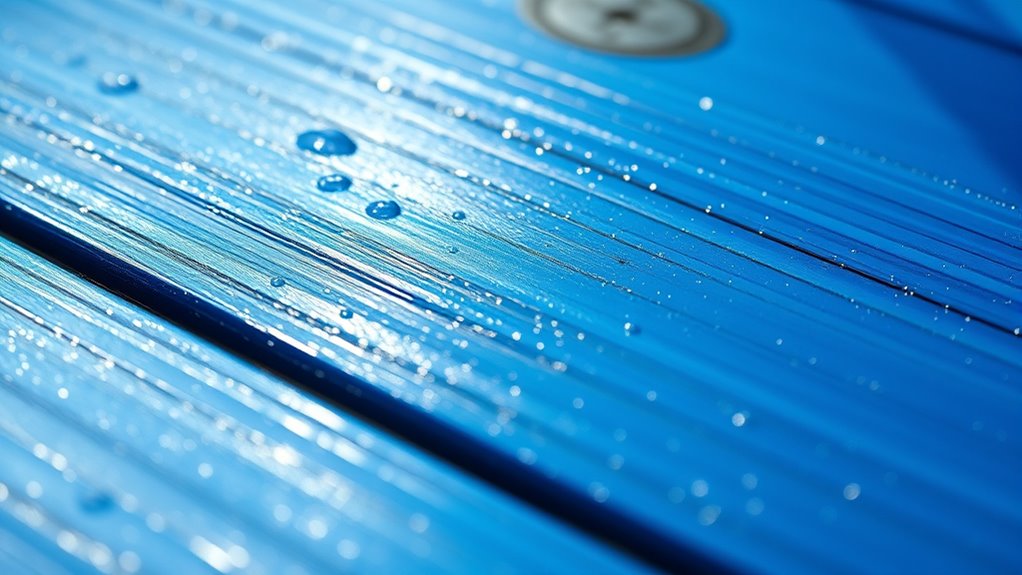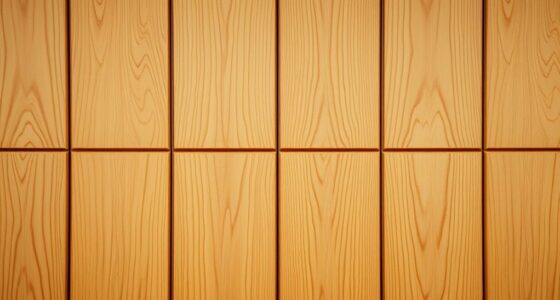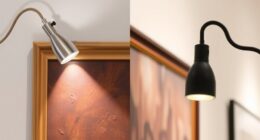The time it takes for paint to fully cure depends on factors like paint type, thickness, and environmental conditions. Latex paints typically cure in 2 to 4 weeks, while oil-based paints may need 6 to 8 weeks. Warm, dry environments speed up curing, while humidity and poor ventilation slow it down. Proper curing is essential for durability and appearance. Keep exploring to discover how you can help your paint cure faster and better.
Key Takeaways
- Curing time varies by paint type, typically 2-8 weeks, affecting durability and adhesion.
- Proper curing ensures paint hardens fully, preventing peeling, chipping, or fading over time.
- Environmental conditions like humidity and temperature significantly influence curing speed.
- Rushing curing can compromise paint strength, leading to long-term damage or surface issues.
- Recognizing when paint is fully cured helps ensure the best appearance and long-lasting results.
Factors Influencing Paint Curing Time
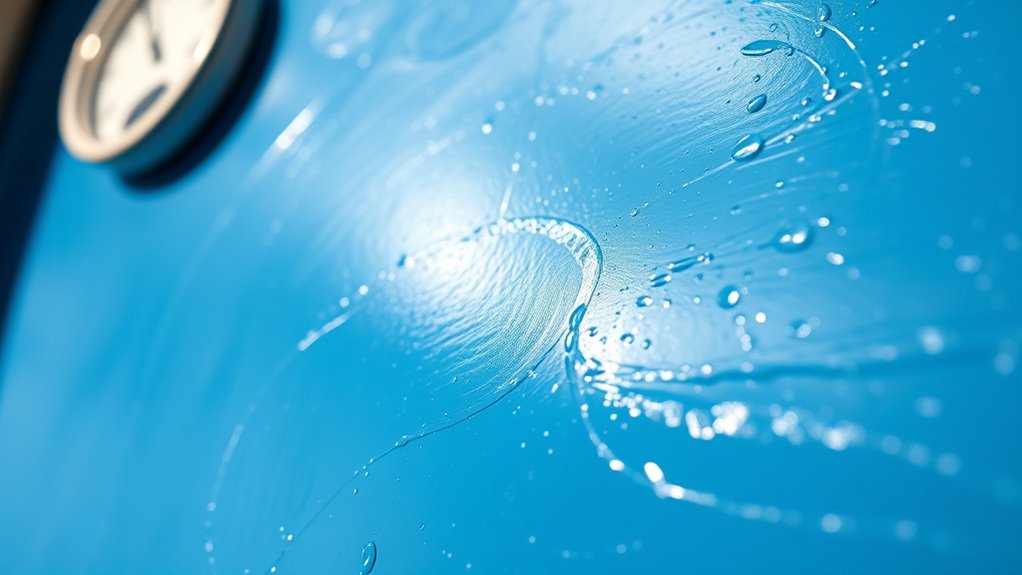
Several factors can influence how long paint takes to cure, and understanding these can help you plan your project more effectively. One key factor is paint texture; thicker or textured paints, like stucco or heavy coatings, generally take longer to fully cure because they contain more material that needs to set. Environmental conditions also play a vital role. High humidity or low temperatures slow down the curing process, while warm, dry conditions speed it up. Good airflow helps moisture escape, aiding curing. Conversely, poor ventilation can trap moisture, delaying the process. Recognizing how paint texture and environmental factors interact allows you to anticipate curing times more accurately, ensuring your paint job lasts and looks its best. Proper planning minimizes issues caused by premature use or cleaning. Additionally, understanding the specific paint type you use can provide more precise curing timelines. Being aware of environmental factors can help you create optimal conditions for a quicker and more effective cure.
Differences Between Drying and Curing
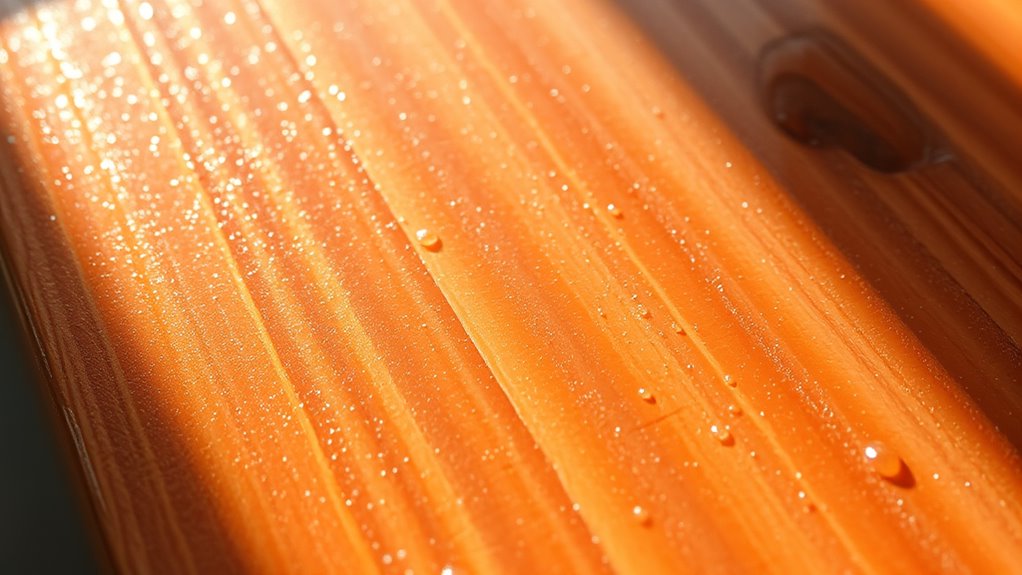
Understanding the difference between drying and curing is essential for achieving the best results with your paint. Drying occurs when the paint loses solvents or water, allowing it to feel dry to the touch. Curing, however, involves chemical reactions that strengthen the paint’s adhesion to the surface, making it durable and long-lasting. While drying might happen within hours, curing can take days or even weeks, depending on the paint type. Proper curing ensures that the paint bonds fully with the surface, preventing issues like peeling or chipping later. Additionally, proper ventilation during the curing process can significantly influence how quickly and effectively the paint cures. Knowing this distinction helps you determine when your paint is truly ready for regular use. Rushing the curing process can compromise paint adhesion, so patience is key to a professional-quality finish. Additionally, understanding somatic therapy techniques can help you manage stress and maintain patience during this curing period.
Typical Curing Times for Various Paint Types
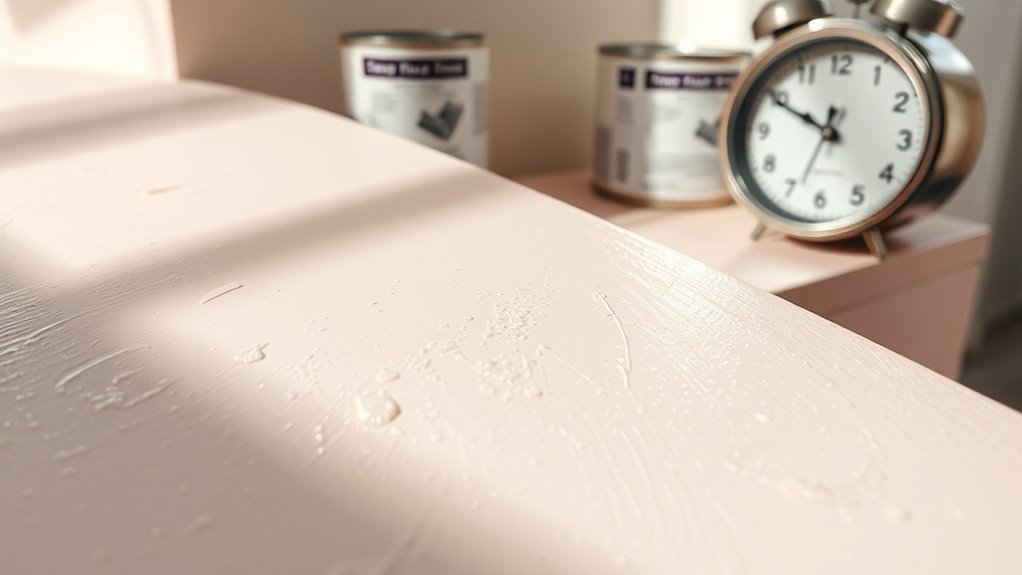
The curing times for different paint types vary considerably, so it’s important to know what to expect for each. Latex paints typically cure within 2 to 4 weeks, depending on their chemical composition and environmental humidity. Oil-based paints often take longer, around 6 to 8 weeks, as their chemical makeup requires more time to fully harden. Epoxy and polyurethane paints usually cure faster, in about 3 to 7 days, but high humidity can slow this process. Environmental humidity plays a significant role, as excessive moisture delays curing by interfering with chemical reactions. Proper curing conditions are essential to ensure your paint performs as expected over time. Additionally, maintaining appropriate temperature levels can further influence the curing process. Understanding these typical durations helps you plan for proper curing and ideal durability. Proper curing conditions are essential to ensure your paint performs as expected over time. For optimal results, selecting the appropriate airless paint sprayer can help achieve a smooth application that promotes better curing.
How to Speed Up the Curing Process
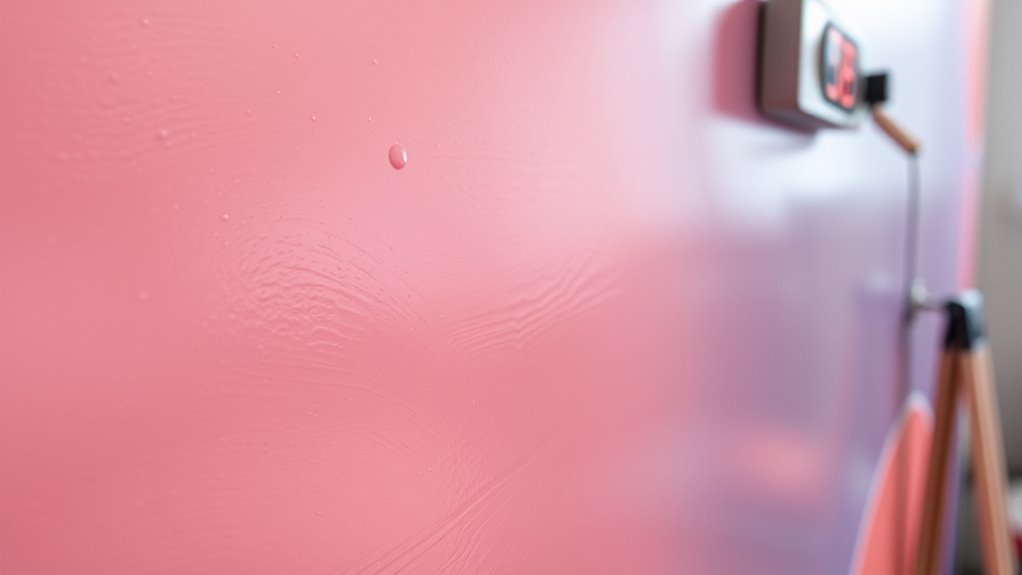
While patience is often necessary for paint to fully cure, there are effective ways to accelerate the process. Improving paint ventilation helps by removing fumes and moisture, which speeds up drying and curing. Managing temperature control is also essential; keeping the area warm (around 70°F) encourages faster curing, but avoid excessive heat that could cause issues. You can also:
- Use fans to increase airflow and reduce humidity
- Maintain consistent temperatures to prevent uneven curing
- Avoid applying thick coats that trap moisture and prolong curing
- Incorporate air purifiers to improve indoor air quality and reduce airborne moisture that can hinder curing
- Ensuring proper ventilation helps remove excess moisture and fumes, further speeding up the curing process. Additionally, using dehumidifiers can help lower indoor humidity levels, creating an optimal environment for faster curing. Proper air circulation is also crucial to prevent damp spots and ensure an even finish.
Signs That Your Paint Is Fully Cured
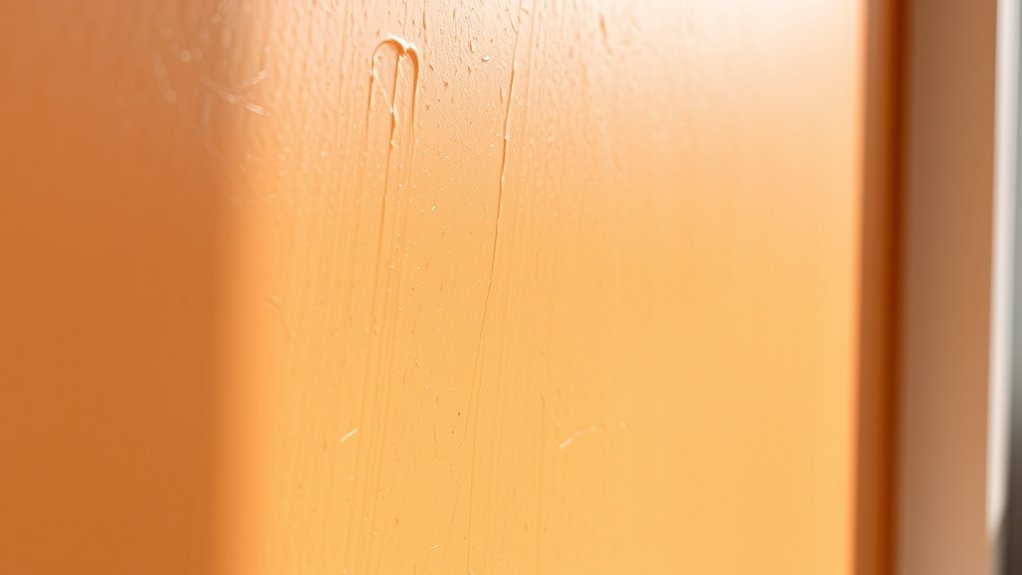
You’ll know your paint is fully cured when it feels hard and solid to the touch, with no tackiness or softness remaining. At this point, paint adhesion has reached its maximum strength, ensuring the coating is securely bonded to the surface. You may also notice that the paint’s color remains vibrant and stable, with no signs of fading or dullness. If the surface resists scratches or dents and the paint doesn’t peel or chip easily, these are strong indicators it’s fully cured. Additionally, you shouldn’t see any odor or chemical smell lingering, which suggests the solvents have evaporated completely. Recognizing these signs helps you avoid damage or premature cleaning, ensuring your paint job lasts longer and looks its best. Proper curing timeframes are essential for achieving a durable and professional finish. Moreover, understanding the paint curing process can help you plan your project timeline effectively, preventing mishaps and ensuring optimal results. It’s also important to consider factors like temperature and humidity, which can influence curing time and overall drying.
Frequently Asked Questions
Can Environmental Conditions Permanently Alter the Curing Time of Paint?
Environmental factors definitely influence curing variability, and yes, they can permanently alter paint’s curing time. If you expose painted surfaces to extreme conditions like high humidity, temperature fluctuations, or direct sunlight over time, it may cause the paint to cure unevenly or more slowly. These conditions can sometimes cause permanent changes in the paint’s finish or adhesion, making it important to control environmental factors during and after application.
Is It Safe to Apply a Second Coat Before Paint Is Fully Cured?
It’s not safe to apply a second coat before paint is fully dried because doing so can cause paint peeling and uneven drying. When you rush the process, the first layer might still be curing, leading to compromised adhesion, increased risk of chipping, and long-term damage. Always wait until your paint is dry, and if in doubt, follow the manufacturer’s recommended curing time to guarantee a smooth, durable finish.
How Does Humidity Affect the Curing Process of Different Paint Types?
Humidity impact profoundly affects paint drying and curing times. When humidity is high, it slows down the evaporation of solvents, extending the curing process for latex and oil-based paints. Low humidity speeds up drying but can cause cracking or uneven curing. You should monitor the humidity levels during painting, especially with different paint types, to guarantee proper curing and a durable finish. Adjust your painting schedule accordingly for ideal results.
What Are the Long-Term Effects of Painting Before Complete Curing?
Painting before paint fully cures can lead to poor adhesion, causing peeling or chipping over time. Studies show that improper curing increases the risk of surface damage by up to 50%. If you skip proper surface prep and rush curing, you jeopardize durability, leading to recurring maintenance costs. Always guarantee paint is fully cured to protect your investment and maintain a smooth, lasting finish.
Are There Specific Paints That Cure Faster Than Others?
Yes, some paints cure faster than others due to their formulation. Fast-curing paints often contain specialized resins or additives that accelerate curing speed, making them ideal for projects requiring quick turnaround. Look for labels indicating quick-dry or fast-curing features, and choose paint formulations designed for rapid curing. Keep in mind, though, that faster curing might sometimes affect durability or finish, so balance speed with your project’s needs.
Conclusion
Understanding how long paint takes to cure helps you achieve a flawless finish, much like a fine wine reaching its peak. Patience is key, as rushing the process can compromise durability and appearance. By paying attention to curing signs and following proper tips, you’ll ensure your project stands the test of time. Remember, good paint curing is like a well-tailored suit—worth the wait for the perfect fit and finish.
